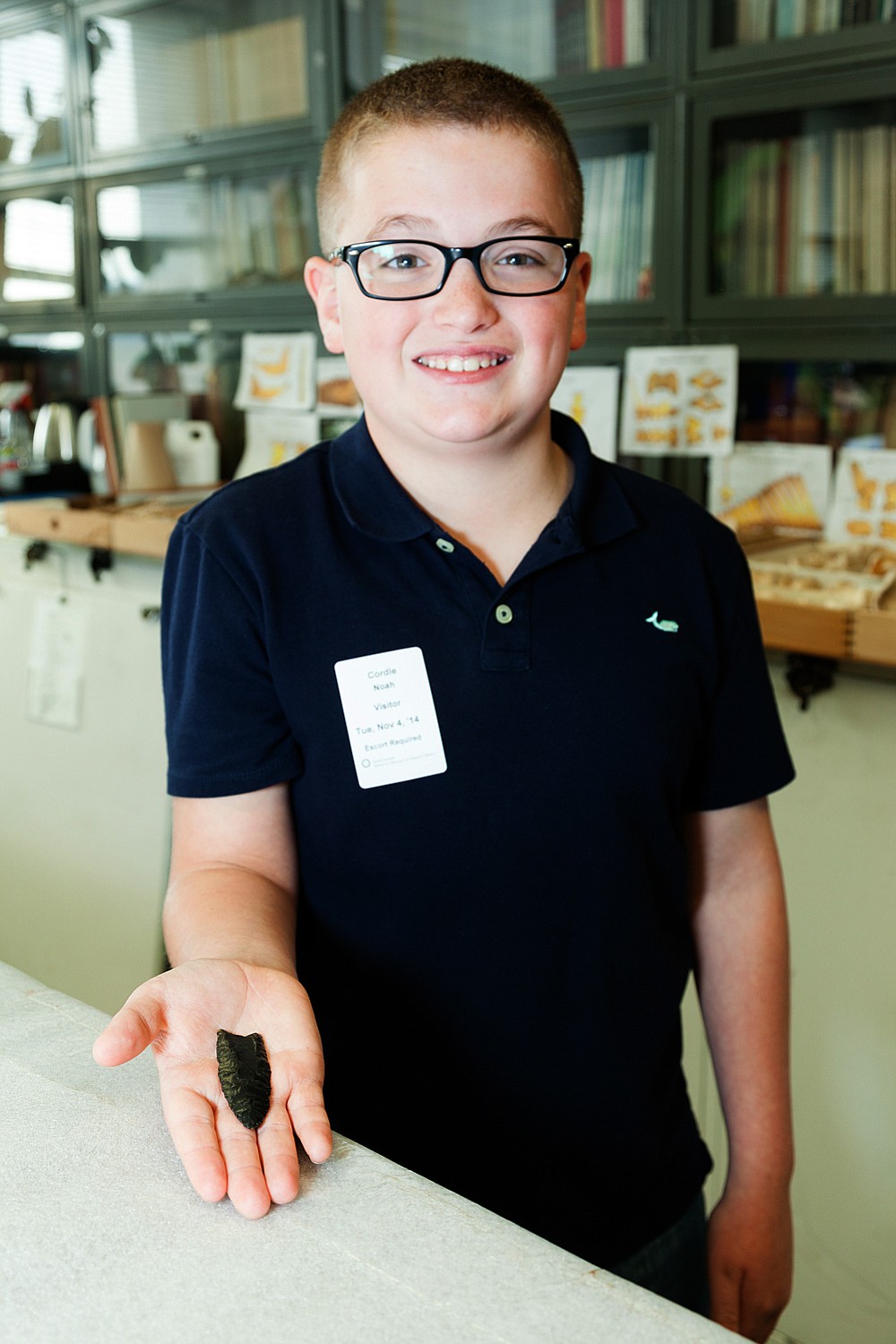WASHINGTON — Thanks to a Virginia kid, researchers at the Smithsonian Institution — and around the world — will get to study an arrow point left behind by North America’s earliest inhabitants.
The inner vaults of the Smithsonian’s National Museum of Natural History are packed to the brim with rare artifacts and fossils, many of them donated. But it’s not every day that a unique specimen is gifted to the museum by a 10-year-old boy.
Lorton resident Noah Cordle made national news in August when he stumbled upon a rare archaeological find while boogie boarding in Long Island Beach, N.J. On Monday, Noah handed the artifact over to Dennis Stanford, a National Museum of Natural History researcher who specializes in these so-called Clovis points.
This isn’t just any old arrowhead: Clovis points, which were chipped from fine, brittle stone like obsidian and jasper, had grooves called flutes to help them fit into spear shafts.
“Clovis artifacts are among the oldest in the new world, and many people think they were made for the first time in the new world,” Stanford said after accepting the arrowhead on Monday. He estimated that the new specimen was between 13,500 and 14,000 years old, and pointed out that it was the museum’s first Clovis point from New Jersey.
Noah seemed delighted to learn about the projectile’s original uses, frequently exclaiming that the Paleoindian artifacts in the collection were “so cool.”
The National Museum of Natural History has a collection of Clovis points found around the United States, and most researchers who visit the collection hope to compare them to each other. “There are actually very few differences between them regionally, which is very interesting,” Stanford said. Adding the first specimen for New Jersey will help them to complete their spotted map of Clovis points.
“There will be no end of students and scholars coming to look at Noah’s Clovis point, so we’re very pleased to have it — but we’re even more pleased that Noah found it and brought it to us,” Stanford said.
When Noah picked the Clovis point out of the ocean, he wasn’t sure what it was. Without his glasses, he thought it might be a shark tooth. His father, Brian Cordle, recognized that it was an arrowhead, but figured it must be a replica. “What would an arrowhead be doing at the Jersey shore?” he said. But the heft of the specimen suggested it might be real. Some Googling by Noah’s mother, Andrea, revealed that the shape of the arrowhead was similar to other Clovis projectiles, which led them to confirm the artifact’s validity with museum staff.
Most of the country’s Clovis points are found by lay people, not scientists, Stanford said — and it’s worrisome to think of them are getting shoved in a backpack or sold when they hold such archaeological value.
But Noah and his parents say that donating the specimen was a no-brainer. The museum will even give Noah a perfect plastic cast of the artifact to hold onto.
“It’s actually pretty spectacular to have something that a place like the Smithsonian would actually want,” Brian Cordle said.



